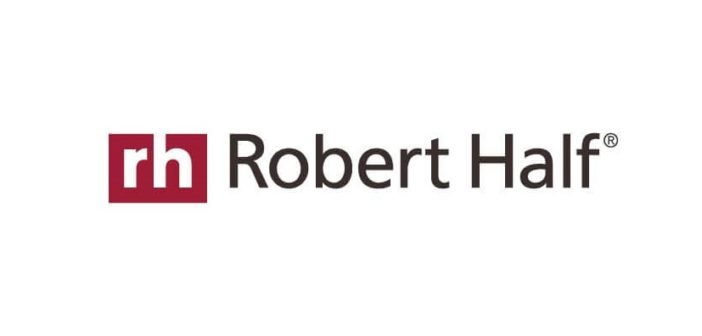
- 97% of Australian CIOs are planning to award salary increases to an average of 21% of their IT staff, with the average increase expected to be 8%.
- 82% of Australian CIOs find it more challenging to source qualified IT professionals compared to five years ago.
- 37% of Australian workers do not think they are currently being paid a fair salary.
- 98% of Australian workers would be willing to accept a job offer with a higher salary if they felt they were not being paid fairly.
The current Australian employment market is suffering through slow wage growth, with the RBA predicting that wages will “increase only gradually” over time[1]. However, new independent research commissioned by specialised recruiter Robert Half and published in the newly-released 2018 Robert Half Salary Guide has revealed top IT workers can expect a pay rise in 2018.
According to the research, the majority (97%) of Australian CIOs are planning to award an average of 21% of their IT staff with a pay rise, with the average increase expected to be 8% – which is well above the national wage price growth percentage of 2%[2]. As IT employers battle an ongoing skills shortage, offering a competitive salary in order to secure top talent is often the most persuasive incentive, particularly in an employment market where 82% of CIOs find it more challenging to source qualified IT professionals compared to five years ago.
To find out up-to-date salaries, download the 2018 Robert Half Salary Guide
Confronted with a skills shortage in many technology areas, CIOs realise the necessity to re-evaluate their employees’ salary, as a survey of 1000 Australian office workers, also independently commissioned by Robert Half, has found the overwhelming majority of Australian workers (98%) would be willing to accept a job offer with a higher salary if they felt they were not being paid a fair salary by their current employer, with nearly two-thirds (64%) of those saying they would be “very willing”.
Compounding the willingness of Australian workers to move to better paying jobs, the research also reveals more than one in three (37%) Australian office workers do not feel they are currently being paid a fair salary by their employer. Almost half (45%) say the reason for it is because their workload and responsibilities are not in proportion to their salaries, while over a third (35%) state their salary is lower than the industry average. Peer-envy is identified by 10% of workers who claim their colleagues who have similar roles receive a higher salary, and 10% state they are being paid unfairly because their salary has not increased in the last two years.
Andrew Morris, Director of Robert Half Australia said: “In a market characterised by slow wage growth, companies that fail to regularly review their employees’ compensation risk losing their top performers to the competition – which is particularly true for IT workers as jobs in the IT sector are growing. In this booming market, IT professionals with niche skillsets are finding themselves in high demand and are more likely to gravitate towards higher paying roles.”
“Employers who do not regularly benchmark their employees’ salaries against industry standards will risk having their top performers gravitate towards more competitive pay packages elsewhere.”
“Organisations dealing with high staff turnover not only have to contend with the hassle of hiring new employees, but also with lost productivity and revenue. To prevent employees form leaving the organisation, employers should regularly review salaries and consider benchmarking salaries as an investment with a solid return, rather than as an unwarranted expense, as it can result in the retention of top performers and uninterrupted productivity. Awarding a competitive salary can also serve to distinguish the organisation as an employer of choice, particularly in a skills-short market with growing scrutiny over wage growth.”
“For employers who are not in a position to award higher pay, these reasons need to be properly communicated to any employees who feel they are underpaid. Managers need to address employee concerns about salaries and discuss alternatives for reviewing salaries in future. Providing a timeframe on when they will receive a salary increase, as well as the necessary steps required by the employee to achieve this, is essential to keeping team members motivated,” concluded Andrew Morris.
The 2018 Robert Half Salary Guide has identified the top IT/technology positions in demand in 2018[3] Australia’s IT sector is currently experiencing a supply/demand imbalance, so top IT professionals – especially those in the following job roles – will be able to negotiate a higher starting salary when interviewing for a new job:
1.Cyber-security Specialist
| Salary Range | ||||
| Percentiles | 25th | 50th | 75th | 95th |
| National average | $100,000 | $118,750 | $134,000 | $155,000 |
Source: Robert Half Salary Guide
The escalating cost and frequency of cyber-attacks has resulted in organisations increasingly relying on cyber-security experts, pushing companies to take a pre-emptive approach to discovering and tracking security issues. This has resulted in rising salary growth for top cyber-security specialists as companies vie for the best talent.
2. Fullstack .Net Developer
| Salary Range | ||||
| Percentiles | 25th | 50th | 75th | 95th |
| National average | $75,250 | $83,750 | $94,000 | $102,500 |
Source: Robert Half Salary Guide
Developing innovative and market-leading software tailored for companies is a highly specialised area, one that calls for IT professionals with a unique blend of specialist technical skills, creative thinking, and business acumen. These professionals need to be comfortable working across both back-end and front-end technologies – making their area of specialisation highly desirable and placing upwards pressure on starting salaries.
3. Cloud Engineer
| Salary Range | ||||
| Percentiles | 25th | 50th | 75th | 95th |
| National average | $90,000 | $105,000 | $120,000 | $140,000 |
Source: Robert Half Salary Guide
Australian companies are increasingly competing within a global business environment, and as such need to adopt the latest cloud technologies to keep up with their international counterparts. Because of this, demand for Cloud Engineers is increasing and IT professionals skilled in this area will find themselves in high demand throughout 2018.
About the Robert Half Salary Guide
The 2018 Robert Half Salary Guide is the most comprehensive and authoritative resource on starting salaries and recruitment trends in finance and accounting, financial services, information technology and administration.
It offers a comprehensive overview of the current salary ranges, industry trends and specific job trends for finance and accounting professionals, finance professionals in the financial services sector, technology professionals and administrative professionals. The results and insights of the 2018 Robert Half Salary Guide are based on comprehensive analyses, local job placements, local expertise and independent research of executives and office workers.
The full 2018 Robert Half Salary Guide can be downloaded via this link.
About the research
The annual study is developed by Robert Half and was conducted in June-July 2017 by an independent research company, surveying 160 CIOs/CTOs from companies across Australia. Additionally, 1000 office workers were surveyed across Australia in December 2017, with the results segmented by age, gender and geographic location.
About Robert Half
Robert Half is the world’s first and largest specialised recruitment consultancy and member of the S&P 500. Founded in 1948, the company has more than 300 offices worldwide providing temporary, interim and permanent recruitment solutions for accounting and finance, financial services, technology, and administrative professionals. Robert Half Australia has offices in Brisbane, Melbourne, Mount Waverley, Perth and Sydney. More information on roberthalf.com.au.
[1] https://www.rba.gov.au/publications/smp/2017/nov/pdf/statement-on-monetary-policy-2017-11.pdf
[2] http://www.abs.gov.au/ausstats/abs@.nsf/mf/6345.0
[3] The 2018 Robert Half Salary Guide contains new formatting for how the starting salaries for each position is presented. The salary ranges are now presented in percentiles (rather than the low-to-high ranges used previously). These percentiles are determined by a candidate’s skillset and experience level, as well as the complexity of their role – the higher the percentile the more complex the role and the greater skillset and experience level required.
By providing a more comprehensive salary overview for all jobs, this approach allows hiring managers to better benchmark starting salaries against a candidate’s experience and qualifications, as well as guides candidates through the necessary steps they can take to earn a higher salary.






